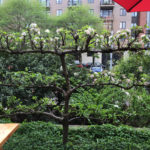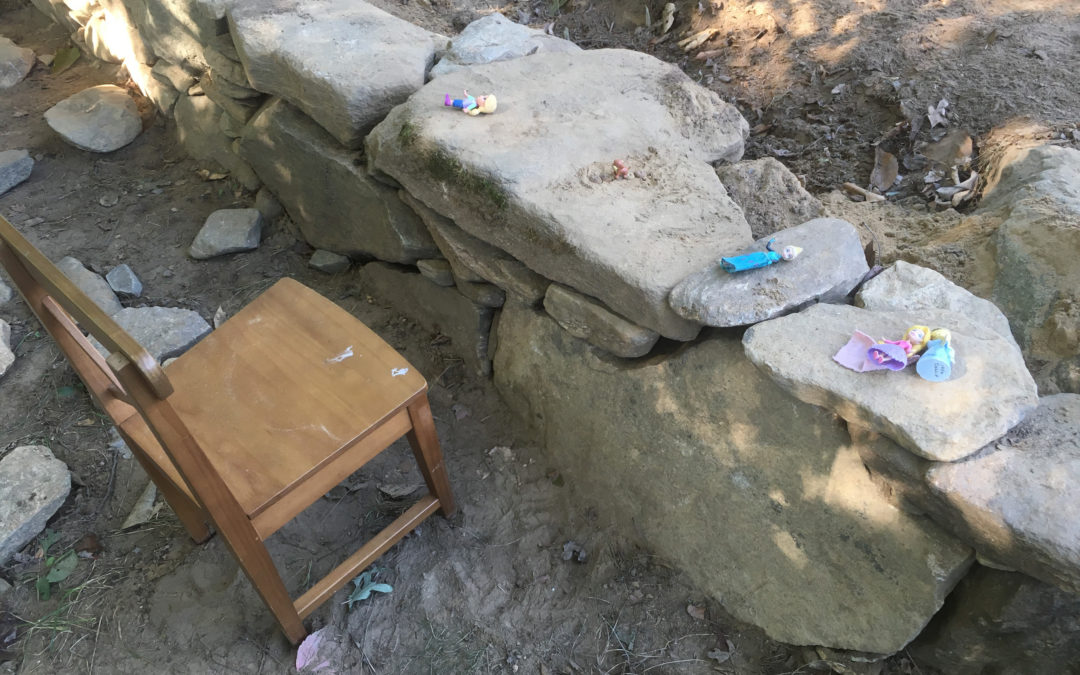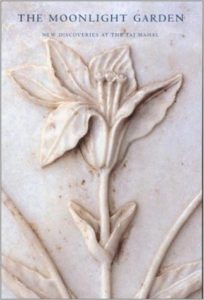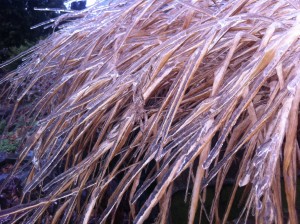Espaliered Native Plants: The Formal Garden

Two-year old red chokeberry being trained as espalier.

Espalier Shapes

Espaliered Apple Tree, Portland, OR

UBC Botanincal Garden Vancouver, BC

Chicago Botanic Garden

Two-year old red chokeberry being trained as espalier.

Espalier Shapes

Espaliered Apple Tree, Portland, OR

UBC Botanincal Garden Vancouver, BC

Chicago Botanic Garden
 We’ve had a few days of such lovely warmth that we might forget it’s still winter. There is plenty of planning to do before vegetable gardens can be planted, so here is a Planting Calendar to help you organize for plan what can be planted first.
We’ve had a few days of such lovely warmth that we might forget it’s still winter. There is plenty of planning to do before vegetable gardens can be planted, so here is a Planting Calendar to help you organize for plan what can be planted first.
Get those seeds out and find a warm, sunny spot for germination (or grow lights if you have them) and start dreaming of your summer harvests and next winter’s treats!


Mosaic Detail in Granite Patio
Sometimes, a work space turns into someone else’s play space. This wall is the foundation for a sugar shack, but on this particular summer afternoon, it was the princesses’ castle wall. Planning for family activities is an important part of landscape design. Sometimes people focus solely on creating specific play areas for the kids, but often, just having an interesting space is what kids need.
Paths can twist and turn, as an invitation to see what is around the corner or the future site of a surprise attack. Elevation changes offer children a chance to experience viewing the world from a different perspective. Water features are possibly a place to splash, feel the coolness, see reflections, and watch insect, amphibians, and fish throughout their life cycles. Stones of different sizes, colors, and textures can inspire thoughtful inquiry or construction.
Diverse plant choices provide a variety of heights, textures, colors, smells, and tastes. Different plant heights allow kids to feel both big and small. Big plants provide hiding places where kids can see, but not be seen. Rhododendrons and lilacs become forts on the inside, fallen tree trunks become bridges or lookouts, vines create tents. Groundcovers are a carpet from which to watch the leaves flutter or clouds race across the sky. Small plants could become troll and fairy houses, or just the place where chipmunks disappear and reappear.

Swamp milkweed with crab spider
A variety of colors can help encourage exploration and discovery. Have you even taken the time to notice what color of plants attract what type of pollinators? Blooms, fruits, and leaf colors herald the change of seasons. Different textures of plants allow kids to experience plants by sight and touch. Small, large, broad and strappy leaves can be as inspiring as the soft, velvety feel of Canadian ginger and lamb’s ear. The leathery leaves of mayapples and their flowers that can only be viewed by peeking under the umbrella-like leaves (and finding out the fruits are food for Eastern box turtles). There’s the prickly and sharp, dried purple coneflower seedhead or the smooth, silky-soft feeling of northern sea oats or the leaves of threadleaf bluestar. The rough leaves of peppermint and sage, the smooth, brittle crush of skunk cabbage, and sweet woodland phlox provide exploration through scent.

Lowbush blueberry blooms
Edible plants like blueberries, wild strawberries, thimbleberries, and beach plums, elicit sweet memories of summer; the tartnesss of cranberries, the sweet vanilla-banana flavor of paw paw and savory flavors of herbs can surprise. Children can learn how fruits, seeds, and herbs are grown and how they can be added to meals for nutrition and increased flavor. There are also teachable moments about how all plant fruits are not edible, and children can learn to appreciate the knowledge that these fruits provide food for other creatures, even if not for humans.
There are so many different ways that landscapes and plant choices provide playful, sensory, and educational opportunities for children. Unstructered play and exploration of nature through observation, touch, smell and taste, including the nature in our landscaped yards, balconies, and porches, is a great way for children to experience the world.

Gray treefrog

Dicentra cucullaria (Dutchman”s breeches)
Nighttime in the garden is a magical place, with silverly moonlight caressing leaves and flowers as they sway in a light breeze, the flowers’ fragrance meanders then lingers with the music of nocturnal creatures. The transformation made by moonlight on plants and water and the coolness of the night made moon gardens a popular feature in hot climates. Gardeners chose plants that glowed in the moonlight or infused the air with enticing scents, adding water features that mirrored the moon and stirred silver streams and droplets here and there. Moon gardens became popular in the 1920’s and 1930’s in England and the U.S., but they were somewhat forgotten as people spent more time indoors and the great American lawn replaced flower gardens.
I’ve always had a fascination with moon gardens, though, and I recently began to wonder what native plants would be suitable for nighttime interest. Below is a partial list of North American native plants, predominantly of the Northeast, that could enchant both the moon and you with their blooms and scents. These plants also provide a host of ecological benefits to native pollinators, other insects, and wildlife. As always, choosing the right plants for your site can help decrease water use, maintenance, erosion, and the heat island effect, while providing increased beauty.
Spring: Actaea recemosa and A. pachypoda, Dicentra cucullaria and D. eximia ‘Alba’, Houstonia caerulea, Phlox divaricata and P. stolonifera, Tiarella cordifolia, Trillium grandiflorum and T. luteum, Magnolia virginiana and M. macrophylla, Halesia monticola, H. tetraptera, and H. carolina, Cephalanthus occidentalis, Chionanthus virginicus, Cornus florida, Aronia arbutifolia and A. melanocarpa, Kalmia latifolia, Rhododendron groenlandicum.
Summer: Allium cernuum and A. tricoccum, Anemone virginiana, Aruncus dioicus, Baptista alba, Echinacea purpurea alba, Geranium maculata, Gillenia trifoliata, Hydrangea quercifolia, Koeleria macrantha, Liatris spicata alba, Maianthemum racemosum and M. stellatum, Phlox paniculata, Physostegia virginiana, Polygonatum biflorum, Rosa blanda, Lobelia cardinalis “Alba”, Ceanothus americanus, Clethra alnifolia, Itea virginiana, Rhododendron arborescent, Viburnum lantanoides, V. lentago, and V. nudum, and Viola walteri ‘Silver Gem’.
Late summer/autumn: Achillea millefolium, Actaea rubifolium, Ageratina altissima, Agrostis scabra, Amsonia tabernaemontana, Andropogon virginicus, Ascelpias verticillata, Clematis virginiana, Doellingeria umbellale, Eurybia divaricata, Heuchera villosa, Hibiscus moscheutos, Monarda punctata, Muhlenbergia capillaris, Nymphaea odorata, Panicum virgatum, Pycnanthemum tenuifolium and P. virginianum, Sanguisorba canadensis, Symphyotrichum erecoides.
 If you are interested in reading more about moon gardens and the discovery of the gardens that existed at the Taj
If you are interested in reading more about moon gardens and the discovery of the gardens that existed at the Taj
Mahal in the 1600’s, read The Moonlight Garden: New Discoveries at the Taj Mahal, by Elizabeth B. Moynihan. A short history of moon gardens can be found in this post from Don Statham Design in New York.

Winter often seems like an “off” season for the garden. There are no blooms, no butterflies, and many of the birds have flown south. But for those of us who live in a temperate climate, there are still a lot of things happening in the landscape.
For one, the cold is an important part of a plant’s life cycle. Dormancy allows a plant to save energy for the following season’s growth. It allows the plant to weather below-freezing temperatures without damage. Cold is required for many seeds to germinate.
Snow introduces small amounts of nitrogen into the soil. Snow insulates the ground, keeping it frozen, and helping to prevent frost heave. It also helps plants from sprouting too soon during un-seasonally warm weather. Microbial activity also continues at low temperatures. These microbes are important because they help break down soil nutrients to a form that plants can use. Plants don’t directly “eat” the soil, instead they have a symbiotic relationship with the soil microbes that help them utilize the nutrients. If you have happy, healthy soil, your soil microbes will still be busy during the winter.
Any remaining foliage, dead leaves, and coniferous trees and shrubs can provide a multitude of insects, birds, and animals with protection or food.
Ecological Landscaping Techniques
Many people advocate removing dead plant matter from the landscape in the fall. Although there is a chance of voles using leaf litter as protection and causing damage, there are many reasons. Learn which plants to remove leaf litter from and which can remain. Fruit trees and roses benefit from removing debris which can harbor fungal disease or pests from the ground under them. Elsewhere in the garden, this leaf litter serves many important functions. Read the pamphlet for a more detailed discussion: Life in the Leaf Litter (1.7 MB pdf)
Remember that keeping raw materials on-site is efficient and sustainable. It returns nutrients in your garden back to the soil and it decreases your town’s cost and fuel requirements for landscape waste removal and processing.
Plant Choices
Native plants often provide many more ecological benefits than introduced species, including cultivars. For instance, Rutgers hybrid dogwoods, a cross between kousa and native dogwoods, are sterile (meaning they do not produce seeds that will produce more plants) and the cultivar is more resistant to insects and disease. Also, the berries of the some plant cultivars, like ‘Winter Sprite’ winterberry, are not eaten as readily by birds as the native winterberry. If you mourn the fact that the berries of a plant are eaten by birds too quickly and you can’t enjoy the red color throughout winter, consider planting both a native and a cultivar. That way, you will not deprive the birds of an important winter food source. Your plant choices have an impact on other things beside the designed space, so if you are trying to have a sustainable or ecologically-friendly landscape, read about the plants you are considering or consult reliable sources like the New England Wildflower Society.

Ice Covered Grasses
Remember that some berry producing plants, like hollies, are dioecious and require both a male and female plant in order for the female to produce fruit. It is also important to plant species that are appropriate for the site based on the plant’s requirements for moisture, soil type, heat, cold, and light.
Natural Architecture
Another thing that I enjoy about plants in winter is that they provide striking architecture in the winter garden. This is one of the reasons that I don’t remove dead plants until spring. It isn’t just the coniferous trees and shrubs – I enjoy seeing the snow and ice on most of my plants.
I hope that despite the overwhelming amount of snow this season, you can find beauty in the important ways that the snow and cold weather provide valuable ecological services to our environment. Grab your snowshoes and go look for something unexpected!